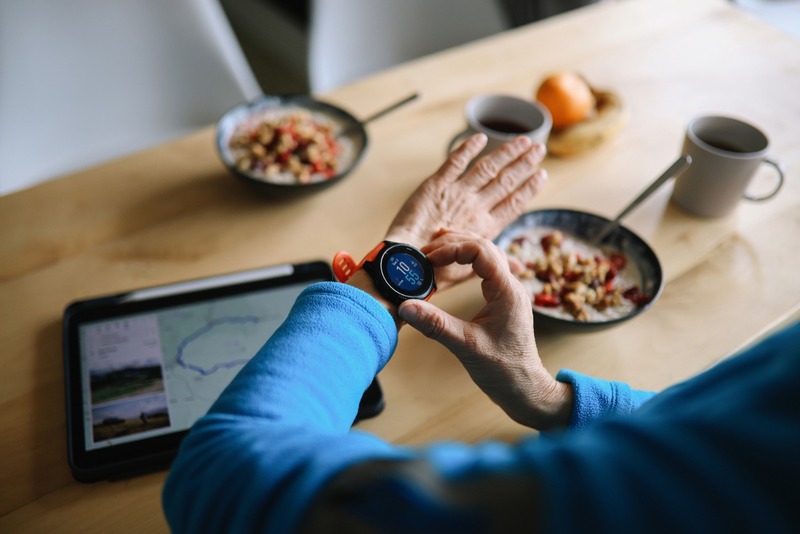News
Seeing the Future: Steadman Philippon Research Institute Provides Unparallleled Technologies in Sports Medicine Research & Development
Tim Jitloff Tommy Ford and Tucker Perkins have seen the future.
The three U.S Ski Team members have all had surgery at the Steadman Clinic and on Wednesday they were taken on an insider's tour of the bio-motion and bio-mechanical testing laboratories at the Steadman Philippon Research Institute in Vail.
One lab looks like something out of the movie Ironman with robots buzzing around doing tests on cadavers. The other looks like the Hollywood studio where that film was made.
By having both labs under one roof it allows the doctors at Steadman to get pre- and post-surgical evaluations of motion. Restoring normal motion would be the primary goal of any surgery performed at the Steadman Clinic and Dr. Marc Philippon who has restored motion to countless numbers of people from pro athletes and everyday working men says having the lab right downstairs at Steadman is crucial to his success as a surgeon trying to restore normal motion to patients.
It's really a big big part of understanding of how these injuries happen and how we can correct them says Philippon.
In addition to having a 10-camera motion-capture system like the ones used to create characters in video games and animations in movies at Wednesday's tour we see the bio-motion lab also has a bunch of sports equipment lying on the floor. One end of the lab itself actually looks like the inside of a hockey arena right down to the plexiglass barrier protecting the fans from wayward pucks. In front of it is a soccer ball a tennis racquet a hockey stick a baseball glove a golf club a basketball and a good-looking woman wearing ski boots on an Astroturf surface. Her name is Katharine and she tells Jitloff Ford and company that while she's no ski racer herself she can simulate the motions well enough to learn what forces the body is enduring while racing and where. She does her demonstration standing on a force plate and leaning into turns like a ski racer would with assistants using ropes on either side of her to keep her from falling.
She's wearing a number of reflective markers which infrared lights shine on and reflect off of. A nearby computer picks up the reflective markers which are assigned to specific anatomical locations and generates an image in real time.
From that we can calculate angles says Dr. Eric Giphart a senior staff scientist in the bio-motion lab. So we can see how deeply we're squatting and from the force plate we can actually figure out what the loads are on the joints. We can do that with any kind of sport.
'Outcome based' research
It has a setback though says Giphart. If you want to study leg muscles and you put a marker on a leg he explains the skin can move more than the muscles which move relative to the bone and not the skin.
Which is why the Steadman Philippon Research Institute is one of only a five places in the world that has a biplane fluoroscopy system a stereoscopic X-ray machine that uses multiple eyes to record and create a 3-D movie of a moving joint. It records your motion at 1000 frames per second so doctors can slow it down and really see how the joint is functioning under regular motion like walking or jumping.
The main thing that's different here says Giphart is that we have these two systems side-by-side.
Giphart explains that following a surgical treatment Steadman Clinic patients walk through the biplane fluoroscopy system so doctors can see if surgery really returned that motion back to normal.
The Steadman Philippon Research Institute is a leader in what they call outcome based orthopedic research. Following surgery they track patients for 20 years and their database consists of more than 20000 people. The goal is to publish the outcomes so that the medical community may benefit from the information in the database.
A walk through the bio-motion lab's biplane fluoroscopy system following a surgery would be one example of the institute studying the outcome of a procedure.
But before walking through that machine you'll be thankful to know that next door in the institute's bio-mechanical testing lab there's a room full of machines designed to gather info about how your surgery should best be performed before it is performed. Those machines test out devices that are to go into the body before they go into the body so doctors don't have to learn the hard way that while they are FDA approved not all devices are created equal.
Top reputation
On Jitloff Ford and Perkins' tour of the bio-mechanical lab they were introduced to a robot named Rosie.
Doctors insert cadaver knees and shoulders into Rosie who does tests on those joints. Doctors will then cut the ACL on that knee repeat the test to identify things like where the variation in weight displacement is occurring before doing a reconstruction on that same knee and repeating the tests to see how well the reconstruction went.
There's a lot of ways to do a reconstruction explains Dr. Coen Wijdicks a senior staff scientist. What we're trying to figure out using the robot is what is the best way to do a reconstruction.
And by most accounts among their patients they have it pretty well figured. The Steadman Clinic's reputation among U.S. professional athletes is virtually undisputed as the top center for knee hip shoulder ankle and hand injuries.
Following the tour Tucker Perkins talks about his particular procedure.
It's so obvious that all care isn't the same and that these guys are the best in the world he says. I have two weeks left on an ACL injury I had the surgery in March and I haven't felt better. We have other guys on the team with knee injuries who have had surgery elsewhere and they aren't where I'm at right now.
For him returning his motion back to normal means launching 20 feet out of a 22-foot halfpipe.
Forty-five to 50 percent of the men's field didn't finish the season due to ACL injuries says Perkins.
He says for him and the rest of those injured freeskiers the mental component to getting back on the snow is as large as the physical.
I have all the confidence in the world in the institute and the doctors he said. And that's a huge piece of it just the trust you have of everyone here.
More News
-
New!
More

First Chair to Last Call: What Does Alcohol Really Mean For Your Health?
In nearly every Colorado ski town, some iteration of the neon sign blares its play-hard-party-harder anthem. It’s a not-so-subtle nod to mountain party culture, a lifestyle that normalizes combining sports and outdoor adventures with heavy drinking and partying. In Eagle County, après culture, high-altitude living and outdoor performance have coexisted for as long as locals have been sliding on snow. But how much is too much at altitude? And what role do social support systems play in helping residents find balance?
-
New!
More

Counting More Than Steps: How Wearables Can Help (or Hinder) Your Health
From step counts to sleep stages, heart rate variability to blood sugar spikes, wearable devices are giving us a front-row seat to what’s happening inside our bodies. Strapped to wrists, slipped onto fingers or wrapped around our biceps, wearables like the Oura Ring or Whoop strap promise insight and advice in the quest for better health.
-
More

Cass Barham and Sarah Crabtree Honored As Recipients of Vail Health Elevate Award
Cass Barham and Sarah Crabtree, both lab techs at Vail Health Hospital, have been named recipients of the Vail Health Elevate Award. Vail Health created the Elevate Award in June 2022 to give patients and their families an opportunity to nominate and thank employees who have touched their lives in some way.
